|
Lockheed Martin
F-35A Lightning II
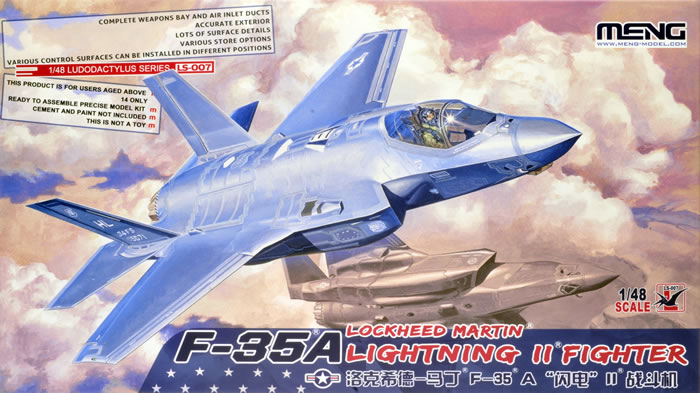
Meng, 1/48 scale
S
u m m a r y |
| Catalogue Number: |
Meng Model Kit No. LS-007 - Lockheed Martin F-35A Lightning II |
| Scale: |
1/48 |
| Contents and Media: |
222 parts in grey coloured plastic; eight parts in clear; three photo-etched parts; clear acetate sheet; markings for six aircraft |
| Price: |
TBA |
| Review Type: |
FirstLook |
| Advantages: |
High level of detail; appropriate surface features including stealthy RAM areas; photo-etched parts for seat harness straps; canopy may be posed open or closed; includes ordnance for weapons bay; optional wing pylons; high quality decals for two options. |
| Disadvantages: |
|
| Conclusion: |
Meng has been quick off the mark with their production model 1/48 scale F-35A Lightning II.
Moulding quality is excellent, detail is very good, the equipment bays are busy (including ordnance), and the RAM panels are subtly done.
The parts count is quite manageable and the breakdown is modeller friendly, so Meng's Lightning II should be a pleasant build too.
Highly Recommended. |
Reviewed by Brett Green

Eduard's 1/48 scale SE.5a ProfiPACK will be available online from Squadron.com
F-35 History and Development
The Lockheed Martin F-35 Lightning II is a family of single-seat, single-engine, all-weather stealth multirole fighters. The fifth-generation combat aircraft is designed to perform ground attack and air defense missions. It has three main models: the F-35A conventional takeoff and landing (CTOL) variant, the F-35B short take-off and vertical-landing (STOVL) variant, and the F-35C carrier-based Catapult Assisted Take-Off Barrier Arrested Recovery (CATOBAR) variant. On 31 July 2015, the United States Marines declared ready for deployment the first squadron of F-35B fighters after intensive testing. On 2 August 2016, the U.S. Air Force declared its first squadron of F-35A fighters combat-ready.
The F-35 descends from the X-35, the winning design of the Joint Strike Fighter (JSF) program. An aerospace industry team led by Lockheed Martin designed and manufactures it. Other major F-35 industry partners include Northrop Grumman, Pratt & Whitney and BAE Systems. The F-35 first flew on 15 December 2006. The United States plans to buy 2,457 aircraft. Its variants are to provide the bulk of the crewed tactical airpower of the U.S. Air Force, Navy and the Marine Corps over the coming decades. Deliveries of the F-35 for the U.S. military are scheduled until 2037 with a projected service life up to 2070.
The United States principally funds the F-35 JSF development, with additional funding from partners. The partner nations are either NATO members or close U.S. allies. The United Kingdom, Italy, Australia, Canada, Norway, Denmark, the Netherlands, and Turkey are part of the active development program; several additional countries have ordered, or are considering ordering, the F-35.
The program is the most expensive military weapons system in history, and has been much criticized inside and outside government, in the U.S. and in allied countries. Critics argue that the plane is "plagued with design flaws," with many blaming the procurement process in which Lockheed was allowed "to design, test, and produce the F-35 all at the same time, instead of… [identifying and fixing] defects before firing up its production line." By 2014, the program was "$163 billion over budget [and] seven years behind schedule." Critics also contend that the program's high sunk costs and political momentum make it "too big to kill.".
F-35A
The F-35A is the conventional takeoff and landing (CTOL) variant intended for the U.S. Air Force and other air forces. It is the smallest, lightest F-35 version and is the only variant equipped with an internal cannon, the GAU-22/A. This 25 mm cannon is a development of the GAU-12 carried by the USMC's AV-8B Harrier II. It is designed for increased effectiveness against ground targets compared to the 20 mm M61 Vulcan cannon carried by other USAF fighters.
The F-35A is expected to match the F-16 in maneuverability and instantaneous high-g performance, and outperform it in stealth, payload, range on internal fuel, avionics, operational effectiveness, supportability, and survivability. It is expected to match an F-16 that is carrying the usual external fuel tank in acceleration performance.
The A variant is primarily intended to replace the USAF's F-16 Fighting Falcon. At one point it was also intended to replace the A-10 Thunderbolt II starting in 2028. The F-35A can be outfitted to receive fuel via either of the two main aerial refueling methods; this was a consideration in the Canadian procurement and a deciding factor for the Japanese purchase. On 18 December 2013, the Netherlands became the second partner country to operate the F-35A, when Maj. Laurens J.W. Vijge of the Royal Netherlands Air Force took off from Eglin Air Force Base.

On 27 January 2014, General Mike Hostage, head of Air Combat Command, stated he would fight "to the death" to not have a single plane of the USAF's planned 1,763 F-35 purchase be cut, because the allies and partners of the US got "weak in the knees" when seeing the USAF "back away" from the F-35. He said the F-15 and F-16 fleets would become tactically obsolete in the middle of the next decade regardless of improvements. Hostage also commented that the F-35 would be "irrelevant" without the F-22 fleet being viable as the F-35 was not an air superiority fighter, and that an F-35 pilot who enters a dogfight has made a mistake.
The F-35As for the Royal Norwegian Air Force will have drag chute installed. Norway will be the first country to adopt the drag chute pod.
On 2 August 2016, the U.S. Air Force declared the F-35A basic combat ready. The 34th Fighter Squadron located at Hill Air Force Base, Utah, has at least 12 combat-ready jets capable of global deployment. F-35A is scheduled to be full combat ready in 2017 with its 3F software upgrade. Air Combat Command will initially deploy F-35A to Red Flag exercises and as a "theater security package" to Europe and the Asia-Pacific.
*Historical summary adapted from Wikipedia
Meng Model's two most recent releases have been very impressive - their stunning 1/72 scale F-106 Delta Dart and their innovative press-fit 1/48 scale P-51D Mustang.
Meng has now turned its attention to an ultra-modern subject - the F-35A Lightning II in 1/48 scale - which is just rolling off the production lines and entering service now.
Meng's 1/48 scale F-35A comprises 222 parts in dark bluish-grey coloured plastic, eight parts in clear, three photo-etched parts and markings for two aircraft.
Moulding quality is excellent. Ejector pin circles have been carefully placed so that they will not be visible on the finished model.
I like Meng's representaion of the Radar Absorbing Material areas (RAM), moulded as raised zig-zags and strips on the surface of the model.
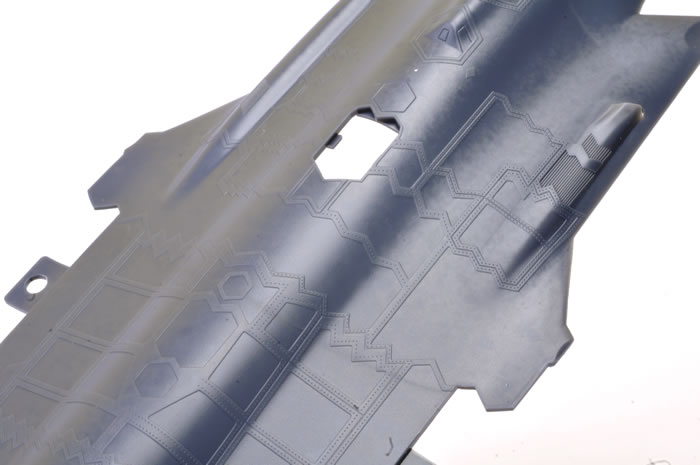
These are raised on the real aircraft too, and usually appear to be finished in a slightly different shade of grey.
Surface detail is almost always a matter of taste and personal opinion. Model companies apply their efforts to representing notable surface textures in relatively small scale, which almost inevitably demands some additional emphasis lest the features disappear altogether. I think that Meng has done a convincing job with their RAM areas, but you'll need to make your own masks if you want to paint the zig-zag RAM areas in a different shade of grey (although I'm sure we won't have to wait long for after-market masks from Eduard).
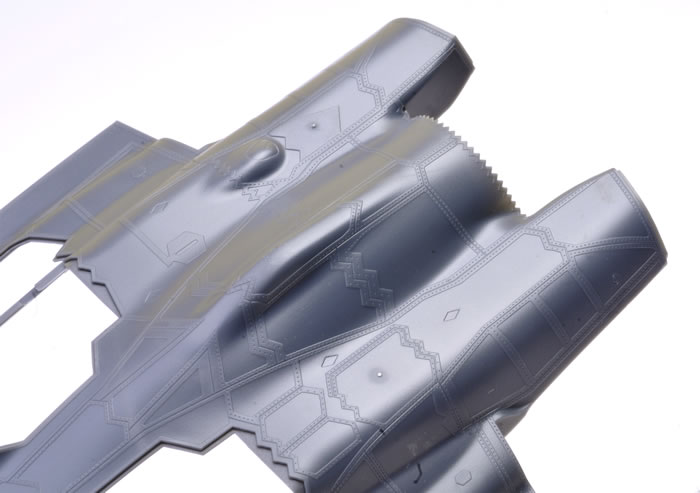
The fuselage is broken down into upper and lower halves. The lower half is moulded with openings for the landing gear and the big ordnance bays. The separate bay areas are all crisply moulded with structural, hydraulic and electrical cabling detail that should look great with some restrained weathering. The various hinges and rams for the are multi-part assemblies by themselves. However, all undercarriage and ordnance doors may be closed if you prefer. The small vent doors on the top of the fuselage may be posed open or closed too. Alternative parts are supplied for the open and closed positions.
The cockpit of the real F-35A is quite clean and simple, and Meng's front office reflects this. A single decal is supplied for the wide screen instrument panel display. Most of the side console detail is moulded to the tub, but the throttle and rudder bar are separate pieces.
The one-piece canopy is moulded in clear clear plastic and may be posed closed or open with separate stout hinge parts. The canopy is admirably thin and free from distortion with no raised centreline seam.
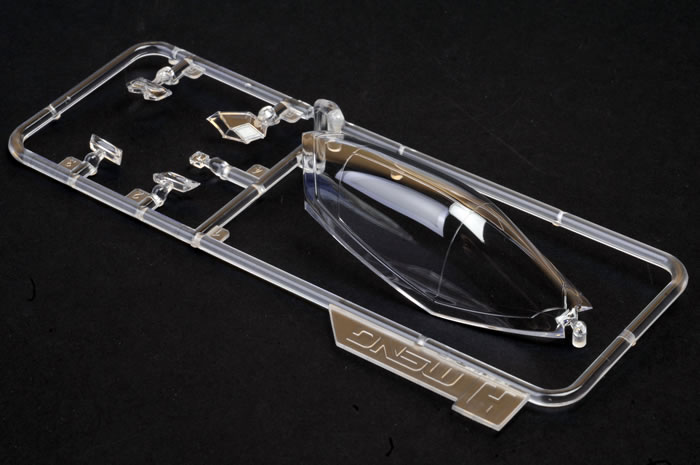
In addition to the frame detail recessed into the clear canopy, Meng also supplies a separate grey plastic frame that is fitted inside the clear part.
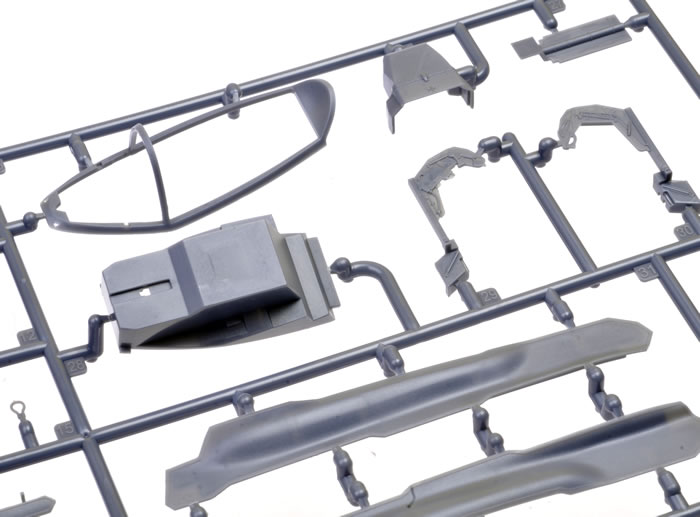
The seat is nicely done, with crisp detail on the sides and rear plus photo-etched harness straps.
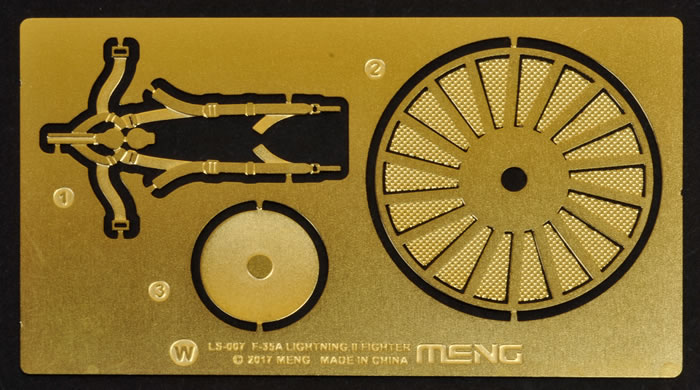
Full-length instake ducting is included.
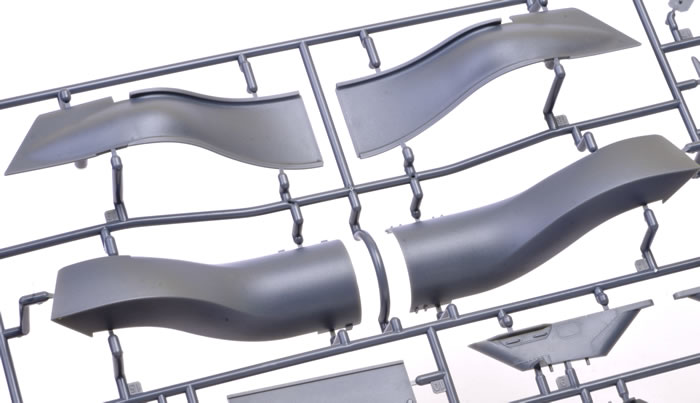
The exhaust nozzle and the photo-etched flame holder assembly looks great.
All the wheels are supplied in plastic (not vinyl - hooray!), and are not bulged or flattened, leaving that decision to the modeller.
Elevators and ailerons are separate parts. The elevators may be fixed at 0 degrees or 10 degrees deflection thatnks to alternative kit parts.
Ordnance for the internal bay is supplied in the form of two lovely one-piece AIM-120C missiles and eight GBU-53 SDBs arranged on two pylons.

Optional external wing pylons are offered for USAF and Italian aircraft, although you'll need to source ordnance elsewhere. Note that Meng is also releasing three separate modern American weapons sets. More on these later.
I was curious to see if Meng had employed any of the "press fit" features of last year's P-51D on this kit, but it appears that engineering and parts breakdown is pretty conventional.
The instructions suggest that the undercarriage legs and wheels should be fitted before the fuselage is closed up, but I would recommend that these should be left until the model is otherwise completed and painted to avoid the risk of damage.
Instructions are called out across 29 clearly illustrated steps. A separate painting guide is also provided.
Markings
Markings are supplied for two USAF F-35As. Stencil markings and coloured stripes for the AIM-120s and GBU-53s are included on the sheet.
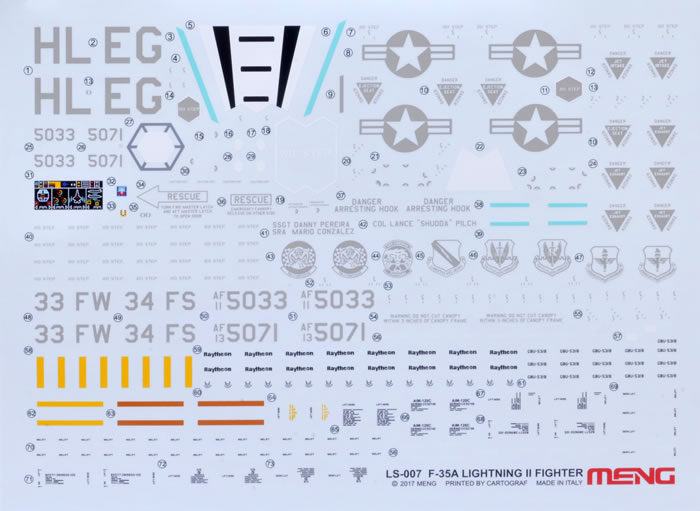
The glossy decal sheet is perfectly printed by Cartograf.
Printing, colours and registration is perfect on my sample.
Meng has been quick off the mark with their 1/48 scale production model F-35A Lightning II.
Moulding quality is excellent, detail is very good, the equipment bays are busy (including ordnance), and the RAM panels are subtly done.
The parts count is quite manageable and the breakdown is modeller friendly, so it should be a pleasant build too.
Highly Recommended.
Thanks to Meng Model for the sample
Review Text Copyright © 2017 by
Brett Green
Page Created 19 June, 2017
Last updated
20 June, 2017
Back to HyperScale Main Page
Back to Reviews Page |
